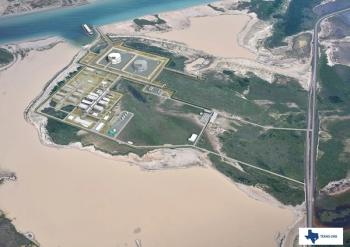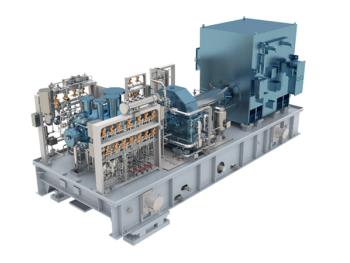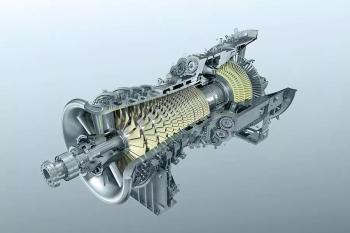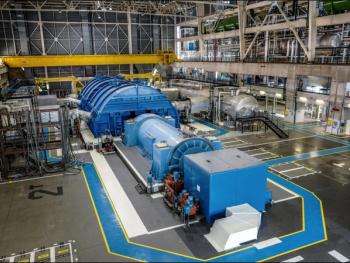
MYTH: YOU CAN OPERATE IN SURGE
We have previously written about surge in our Myth Buster column. It is a violent physical phenomenon that occurs in centrifugal compressor systems with the potential to cause significant damage to the compressor.
Surge occurs when the compressor is not capable of overcoming the discharge pressure imposed by the system: when the compressor operates on the low-flow side of its operating range. This is where the capability of its impellers drops below the point where it can produce sufficient head to overcome the pressure difference between the high-discharge pressure and low-suction pressure. At that point, the gas will flow backwards through the compressor from the pressure side to the suction side.
As a result , the discharge pressure imposed by the system is reduced. Eventually, the discharge pressure becomes low enough that the compressor can overcome it, and the flow will again go from suction to discharge. If nothing in the system is changed, this process repeats.
Surge is thus a periodic cyclic phenomenon that occurs at compressor and piping system characteristic frequencies unrelated to the running speed. As full flow reversal occurs, there are significant forces created during surge with the potential of severe damage to compressor internal components as well as the piping and related structures.
Surge control
All compressors can experience surge, and surge control systems are designed to keep the compressor safely away from crossing the surge line into this unstable operating region.
The compressor surge control system, in its most basic form, is a recycle loop and valve that opens to increase the flow into the compressor whenever it approaches low flow surge.
Conventional practice uses a 10% margin away from the surge line to start opening the compressor recycle valve. This margin generally avoids surge in all steady and transient operating scenarios.
No compressor should be operated in surge. It is dangerous, damaging and inefficient. There may be cases when the surge line is briefly crossed, either accidentally or unavoidably during a fast shutdown. But no compressor should be intentionally operated in surge for an extended period of time since this will likely cause harm to the compressor.
Research efforts are ongoing to extend compressor operating range by control rather than aerodynamic means. Range extension can offer operational flexibility and potential efficiency improvements by running closer to the best operating point and by recycle avoidance.
But the surge-control margin is designed primarily to satisfy critical operating functions: start-up sequencing, normal shut-down, emergency fast shut-down and system upsets causing sudden flow reduction. The last two drive a large safety margin between the surge line and where the recycle control line is set. If the compressor goes into a fast shutdown or experiences another upset that causes rapid f low decrease, the recycle valve opens.
Modern control systems and recycle valves perform this function in less than a second. But what are the surge forces on key internal compressor components and are they sufficient to cause damage to the machine if the transient surge event is very short?
Unfortunately, this requires more than a simple analysis. It is basically a two-step process requiring a transient surge analysis to determine where the compressor crosses the surge line during a system upset and a second much more complex fluid-rotor interaction analysis to determine the axial (and to a certain extent radial) forces acting on the shaft during surge.
Note that methodology and prediction results from fluid-rotor surge interaction analysis is uncertain. Three analysis approaches are currently proposed:
• A simple non-dimensional number also know as the “Surge Severity Coefficient”
• A basic lump-sum, fluid-transient surge model based on the Greitzer surge cycle
• A detailed transient rotor-fluid interaction model including a dynamic model of all relevant time-dependent forces acting on the rotor as a mass-spring-damper system.
The first two provide an initial indication of surge severity and are primarily used to determine whether further analysis is warranted. The third model is a complex fluid-rotor time domain transient analysis that requires detailed knowledge of compressor design and operating characteristics.
The problem is made more difficult as surge forces are not strictly axial. Interaction with a flexible rotor has to be considered. Alternatives to increasing the operating range of a compressor do not involve reduction of the surge-control margin. They rely on more conventional methods, such as restaging the compressor, cycling machines on and off for line-pack/un-pack, wider range impeller designs, hot gas by-path loops, delayed shutdowns, faster surge control systems or even advanced pipeline operating control schemes.
“Can my compressor operate in surge? For how long? Will it be catastrophic?” are valid inquiries to assess a specific compressor’s potential to have an increased operating range on the left side of the conventional surge control line. The answers require complex analysis that generally leaves a significant margin of uncertainty.
Compressors do operate in surge and can survive surge events. The question that is unanswered is, how often, how long, and at what severity can a centrifugal compressor be exposed to a surge event without showing damage or performance deterioration.
Newsletter
Power your knowledge with the latest in turbine technology, engineering advances, and energy solutions—subscribe to Turbomachinery International today.




